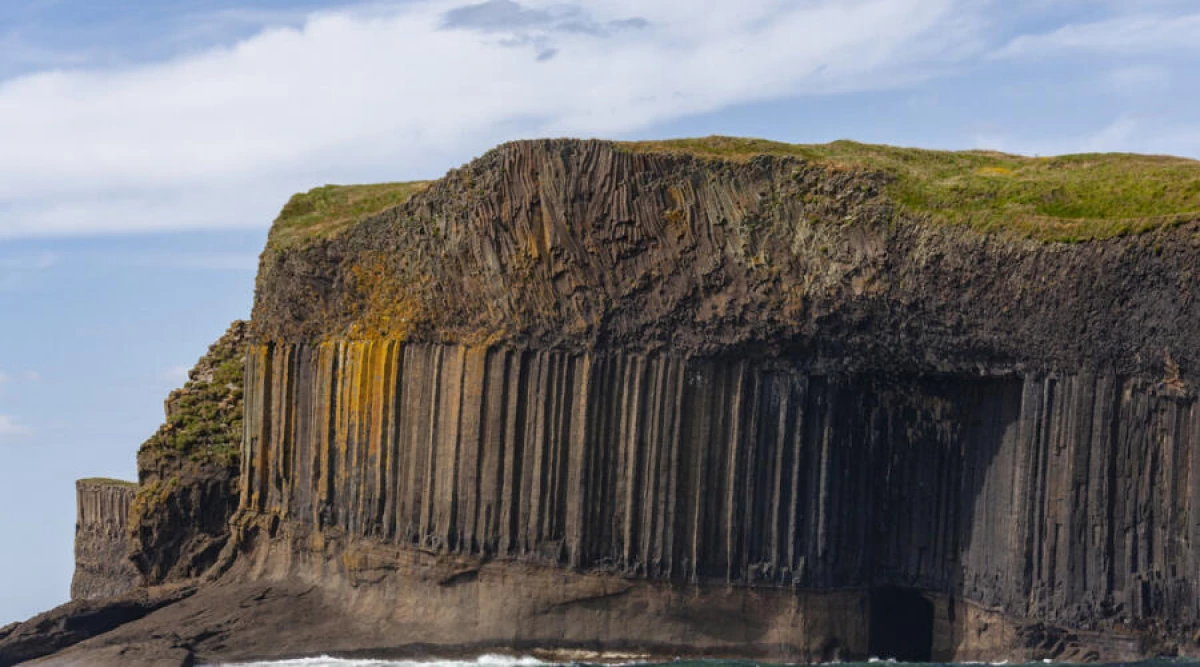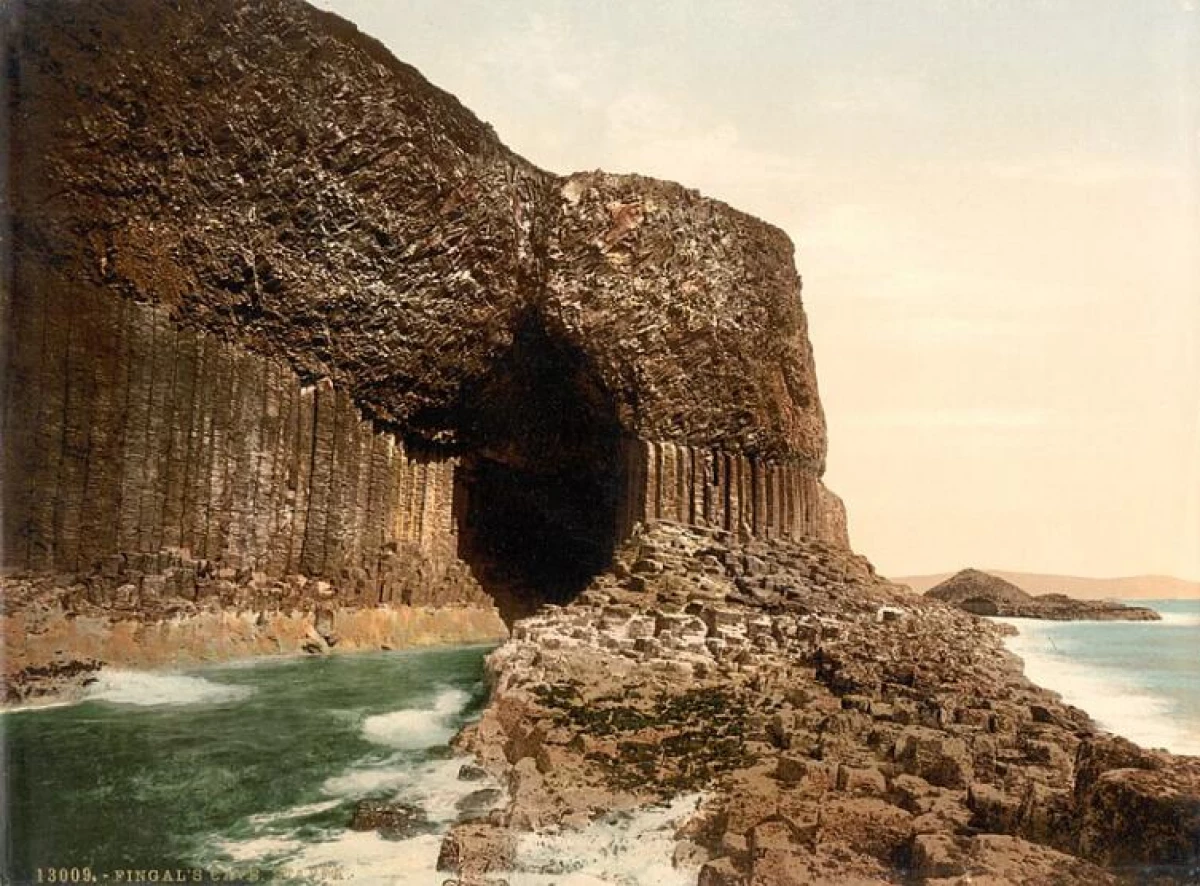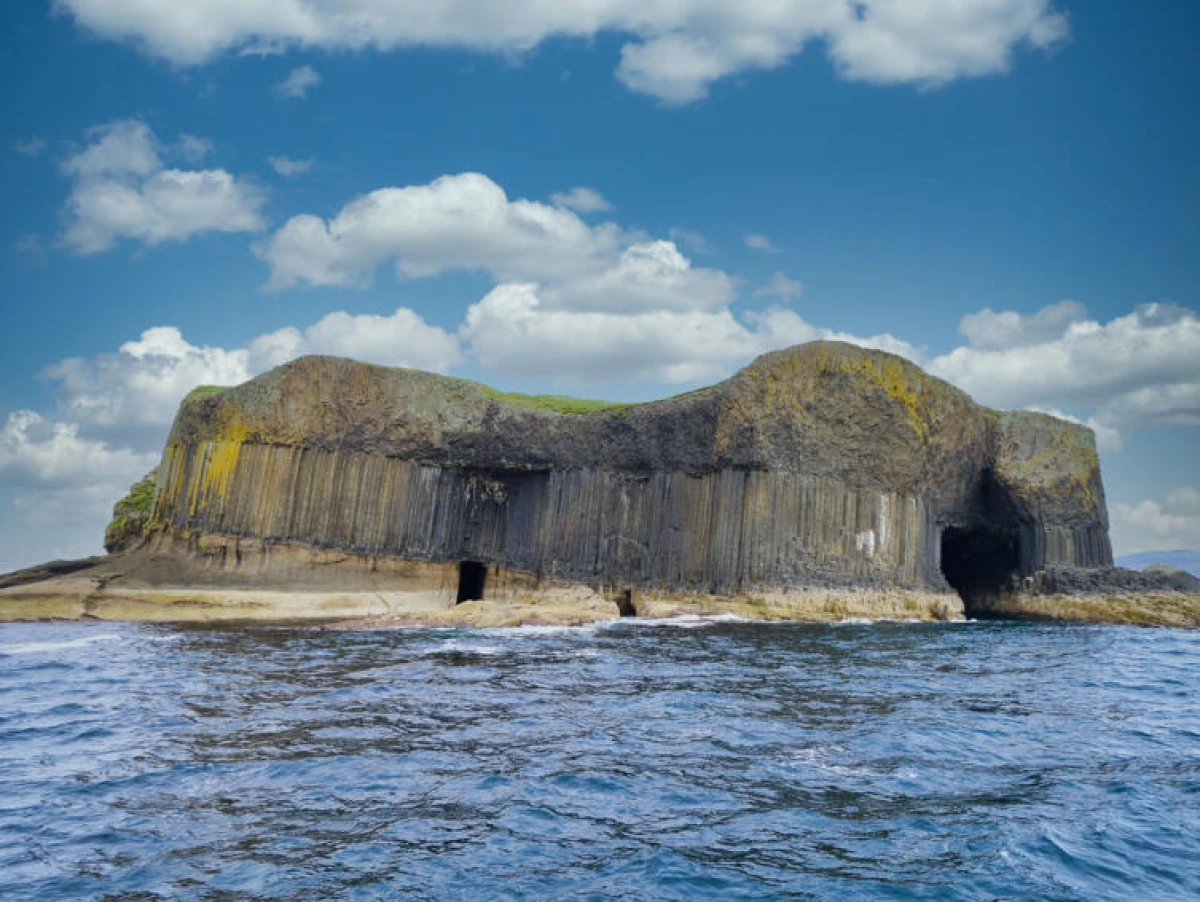
In Scotland there is an amazing place, Fingalov Cave, where you can visit the cathedral, which the nature itself, and hear the charming melodies of waters and winds of the earth.
32 km from Tobermori is a small rocky island of Staffa. On the coast of this island, the waves of the sea and winds were worked, until the wonderful cathedral was created, and more precisely the marine cave.
True, mythology has its own version for the appearance of this island in the sea.
Once upon a time in the Emerald Island (now Ireland), the Giant named Finn, or Fingal. He built a dam connecting Ireland with Scotland. Somehow he arrived to relax. Suddenly his enemy appeared, too Giant. Fingering his wife, showing her husband's sleeping under the cover, said that this was their newborn baby.

Then the giant was frightened, introducing how the owner himself would be, if the baby is so great. The giant was launched in the dat. Running, he destroyed the construction so that the Fingal could not catch it up. Only a small island remained from the dam, on which nature and built a musical cave.
Its walls are composed of vertical hexagon basalt columns (the island has appeared due to volcanic activities), which go to a depth of 70 meters and rises above the land of 20 meters.
Even the construction itself, as if erected by a giant, attracts attention to himself and today the island is included in the territory of the State Scottish Reserve.
The length of the Fingal cave is 113 meters, the maximum width at the entrance is 16.5 meters. The arch on the entrance does not allow boats to enter the cave, so tourists make their way inside through a narrow path running over the edge of the water.

Opened a cave for contemporaries Naturalist Joseph Bank, who visited the island in 1772. In the following years, the scottish prose, poet, historian Walter Scott, English Poet, Historian Walter Scott, English Poet-Romantic William Vordsworth, Jul Verne, Swedish writer August Strindberg, Queen Victoria, Artist Joseph Törsner, Composer Mendelssohn and other, world famous personalities .
For a long time, the cave received the name UAMH-BINN, which translated from Gaelne means "Melodies Cave". Later, she was renamed in honor of the legendary giant of Fingal.

Thanks to the arched, the cave creates unique acoustics, the transforming sounds of the surf, which fill the entire cave. While in this natural concert hall, a person hears the incessant fantastic wind music and waves. It seems as if the gods themselves perform for residents of the Earth the majestic melodies telling about the infinity of the universe.
Inspired by Divine Music, many talented people used their impressions when creating their masterpieces.
- For example, in one of the works of Strindberg, the action unfolds in a fingel cave.
- In 1882, Turner created a landscape showing a view that opens from this cave.
- And Mendelssohn wrote an overture number 26, known as the "Fingalov Cave". The composer tried to convey the feeling that covered it while in the cave.

The best time to visit these places is Spring, when nature awakens on a deserted island. The vertices of reefs are green, the flowers are revealed, algae revitalize their painting and sparkle with all the shades of the ruby and the color of the sea wave.
Sea water, set in the cave, forms a thick fog in the air, which further enhances the feeling of mysteriousness and fabulousness when listening to the melodies that fill the arches of this majestic natural temple.
Author - Lyudmila Belan-Chernogor
Source - Springzhizni.ru.
